If the notion a brand could have a sex life piqued your curiosity, you might have been one of the 111,500 people who retweeted a risqué December 2019 post from Netflix, or one of the 440,000 who “liked” it as of January 2020. It asked, “What’s something you can say during sex but also when you manage a brand Twitter account?” Twitter accounts for other brands or organizations then jumped at the chance to be naughty, reacting to Netflix’s prompt. Ice cream maker Ben & Jerry’s was among those to respond, offering, “Do you wanna take a lick?” and the Tampa Theatre showed a picture of a historic musical instrument on stage, saying “Not bad for a 93-year-old organ, right?” The double entendres came from brands as diverse as Audi and Arby’s.
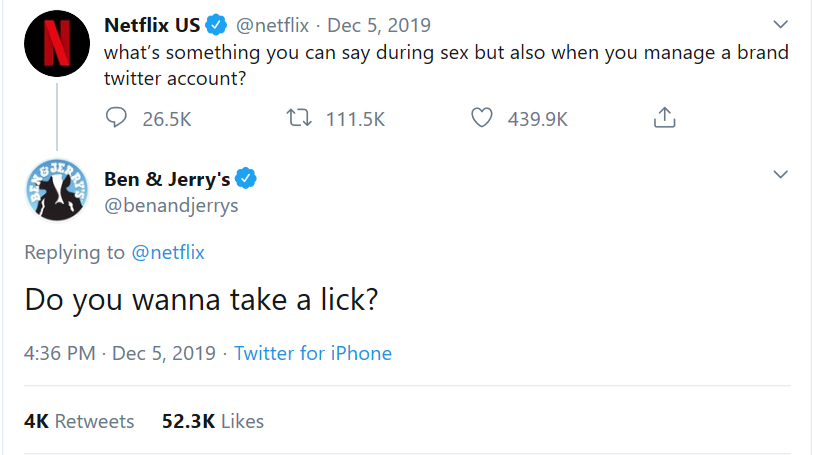
Aviles (2019) talked to academics who noted that while it is unconventional for a brand to so publicly sexualize itself, it fits in with a recent trend. One professor told the NBC News journalist many companies have been aiming to humanize their brands—to make the Jolly Green Giant, for example, seem like he has his own thoughts and attitudes about events—adding that Twitter’s quick back-and-forths can be a good way for brand managers to play around with that. The concept is a twist on what scholars have called brand personification, which Fleck, Michel, and Zeitoun (2014) say can inject personality and relatability into a brand, helping it differentiate itself in the eyes of consumers to build a relationship with a product that leads to loyalty. When brands interact on social media, as was the case with the Netflix tweet thread, each can amplify the others’ impact and appeal (Gensler, Völckner, Liu-Thompkins, & Wiertz, 2013), though the authors noted that companies should carefully consider how to best do so, to minimize the risk of diminishing their own product or service.

In discussing the use of edgy language in branding, such as a root beer label called “Rat Bastard” and a small restaurant chain called “Pizza Orgasmica,” Griffiths (2018) says such choices may bring rejection from certain consumers—namely, older buyers. However, she argues millennials appear far more accepting of it. They swear more and view language their grandparents would have found vulgar as a natural, casual, and passionate way to communicate, Griffiths adds. Additionally, humor in marketing can help a brand make a fresh impression on consumers, especially if it is effective in causing them to laugh or smile and improves their day (Mottl, 2015). Therefore, the combination of off-color language or themes may be a risk certain brands are willing to take, especially since social media platforms are places to build brand awareness (Husain, Ghufran, & Chaubey, 2016) and grow a brand’s reach. However, doing so would appear to go against a classic tenet of brand management on social media, where it has been advised that posts should be consistent with a brand’s established identity (Neudecker, Barczewski, & Schuster, 2015).
An exhaustive content analysis would be required to fully assess Twitter users’ range of reactions to the Netflix tweet, and whether the move was, overall, beneficial to the individual brands that responded. A casual scan of the thread revealed a mix of praise for brands’ sense of humor, pleasant surprise at the comedy that was unfolding, but also, scorn at content some deemed inappropriate.
Several users got a kick out of the Tampa Theatre’s organ joke, for example, with one tweeting “I applaud you!”
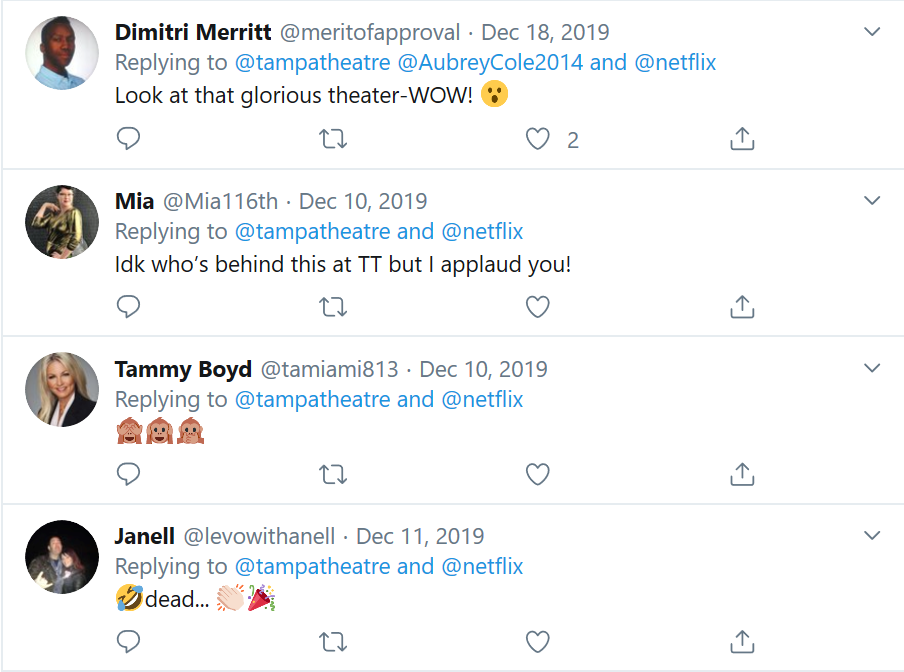
However, user @MolCZet chastised an eye-popping remark from Kettle Brand Chips, vowing to “pass on kettle chips for… the rest of my life,” and adding she now questions the brand.
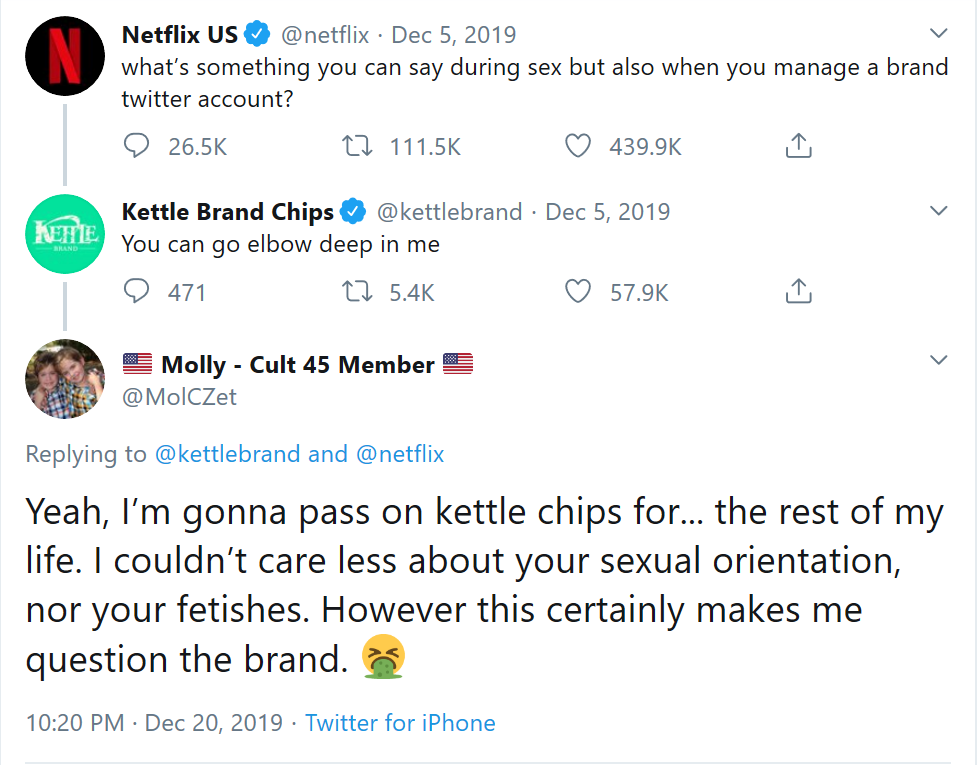
In an unrelated series of tweets in January 2020, similar mixed results came when the National Park Service provided safety tips for people who may encounter a bear in the wild, joking that parents should first pick up small children—unless the kids “have been acting up and you’re trying to send a message.” Many followers of the NPS account seemed to appreciate the dark humor, but others criticized it for the way it joked about harm coming to children.
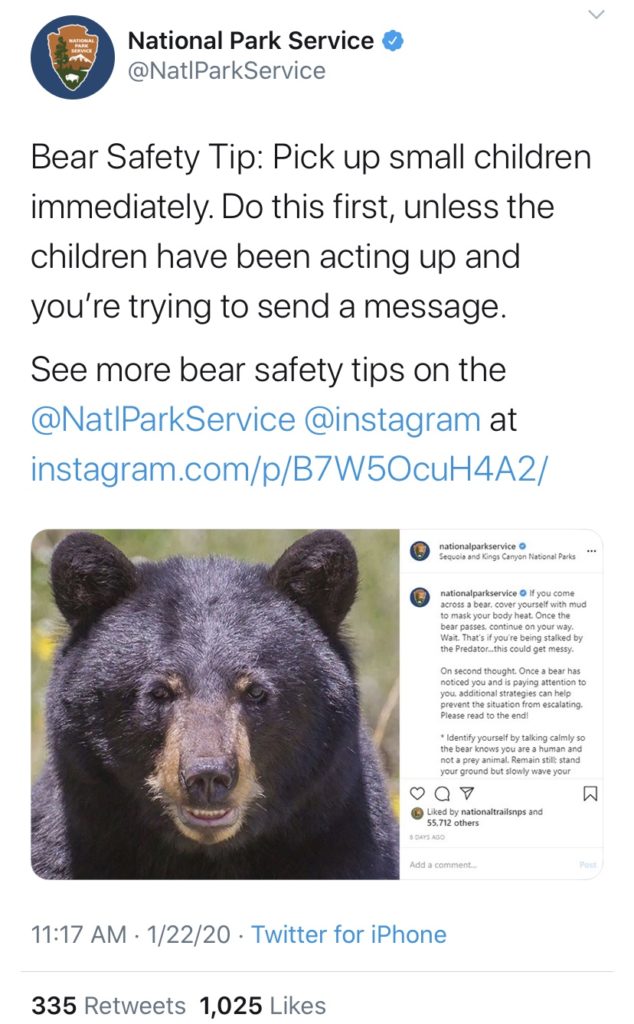
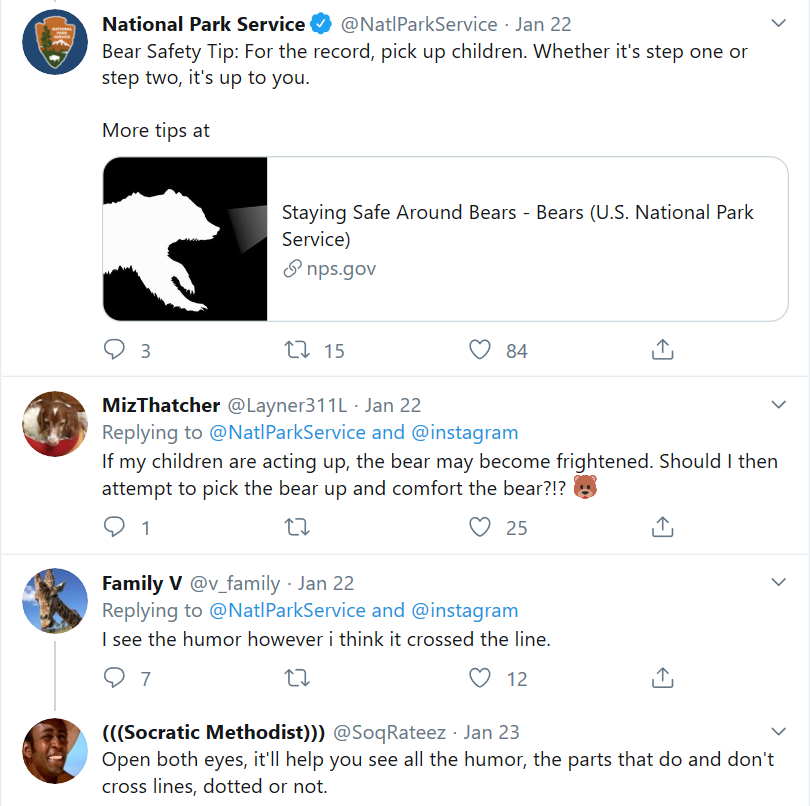
“it crossed a line”
These high-profile examples of controversial Twitter use by brand managers deserve closer study by scholars and by social media practitioners and consultants, who may want to pay very close attention to the way consumers respond. Any such examination should ask which conditions are conducive to edgy approaches by which brands, and should aim to produce recommendations to help social media managers determine when to give their brands such a “voice.” If the potential risk of upsetting some customers with off-color humor is outweighed by the chance to build new or deeper relationships with people who appreciate that unexpected style, perhaps more brands will be looking for opportunities to catch their followers off-guard with buzz-worthy posts…
References
Aviles, G. (2019, December 6). Netflix jumps in on sex meme, creates path for other companies to follow suit. NBC News. Retrieved from https://www.nbcnews.com/news/us-news/netflix-jumps-sex-meme-creates-path-other-companies-follow-suit-n1097151
Fleck, N., Michel, G., & Zeitoun, V. (2014). Brand personification through the use of spokespeople: An exploratory study of ordinary employees, CEOs, and celebrities featured in advertising. Psychology and Marketing, 31(1). 84-92.
Gensler, S., Völckner, F., Liu-Thompkins, Y., & Wiertz, C. (2013). Managing brands in the social media environment. Journal of Interactive Marketing, 27(1). 242-256.
Griffiths, M. (2018). Brand vulgarity. Journal of Product & Brand Management, 27(4). 404-114.
Husain, S., Ghufran, A., Chaubey, D.S. (2016). Relevance of social media in marketing and advertising. Splint International Journal of Professionals, 3(7). 21-28.
Mottl, J. (2015, June 8). How to use humor in marketing to make your customers LOL [Blog post]. Retail Customer Experience. Retrieved from https://www.retailcustomerexperience.com/articles/why-using-humor-in-store-marketing-requires-planning-strategic-consideration/
Neudecker, N., Barczewski, J., & Schuster, H. (2015). How social media transforms brand management. Marketing Review St. Gallen, 32(1). 70-79.

10 Responses to Can (or Should) Your Favorite Brand Have a Sex Life?